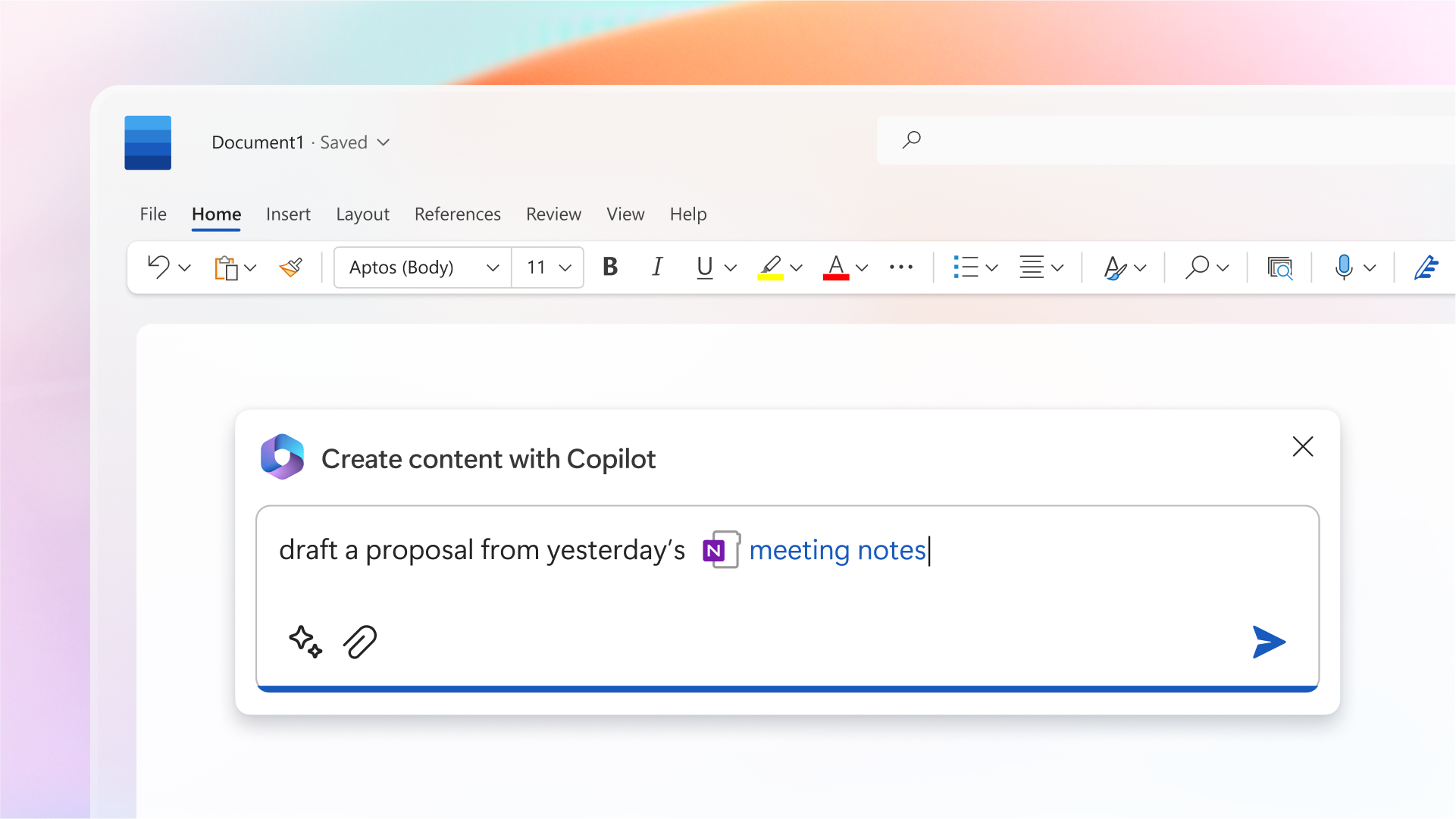Microsoft is bringing AI to Microsoft 365
GPT-4 is coming to the company’s office applications

In the wake of the world's most famous AI writer, ChatGPT, arriving on the Bing search engine, Microsoft has now unveiled its plans to use the same technology to improve workplace productivity, with the introduction of Microsoft 365 Copilot.
Copilot is powered by the same sort of prompt-based AI that drives ChatGPT - meaning that, with a written instruction less than a sentence long, Microsoft 365 can write entire emails and reports for you.
The announcements were made in a virtual press meeting hosted on March 16 via LinkedIn, by Microsoft’s CEO Satya Nadella and its Corporate Vice President Jared Spataro, on the same day TechRadar Pro reported that the company was leaning heavily into GPT-4, the latest version of OpenAI’s language model.
GPT-4 in the workplace
After enthusing about technological advancements in computing that have made human lives easier, such as video conferencing and collaboration tools, Nadella noted that, for the first time ever, AI is now at the center of a product, rather than simply powering it behind the scenes. In light of this, he also called for its responsible use.
However, he also said that the nature of work was going to change, to make our lives even easier.
Spataro then took over to present a segment about the need for these changes, and to “rediscover the soul of work”. He then introduced the new tool, explaining that it works by combining large language models (LLMs), individual’s data, and Microsoft 365 apps people use every day.
He also claimed that because the productivity tool is built on the principles of security, compliance, privacy, and responsible AI, it’s safe and appropriate for enterprise use.
Sign up to the TechRadar Pro newsletter to get all the top news, opinion, features and guidance your business needs to succeed!
He conceded that sometimes Copilot wouldn’t get things right, but would still be “helpfully wrong” - giving users a head start on their task all the same. That’s some spin, but you can't argue with him.
GPT-4 as a time-saver
Another section presented by Sumit Chauhan, Corporate Vice President for the company, showed how Copilot allow users to add their own touches to copy, or even ask Copilot to make it more concise.
In addition, OneDrive can also draw from OneDrive photo albums to choose photos to import automatically.
Copilot can also save users time and “unleash creativity at work", serving up content drafts in the style of previous documents, and draw from existing OneNote documents intelligently so that isn’t working from nothing, a well as potentially requiring less input from users. Linguistic generations can be made more visual, and vice versa.
However, Chauhan warned that reviews by a human are still required before, say, sending the output to clients, but still noted the time-saving possibilities.
Additionally, Copilot can analyze Excel spreadsheets for trends, condense them into brief breakdowns, and pressed for more information. It can even generate graphs from information in an instant.
When it comes to email, Copilot can highlight important messages, summarize threads, and even generate replies that can be made more concise or put into a different style by Copilot itself.
Copilot will allow users to follow meetings without actually being in attendance, by directing Copilot to make notes in their absence. This includes details on who said what, and recognizing why decisions were made, et cetera. All of this can be done during a meeting as well.
Copilot can also take data from, say, a sales material document, and provide it during a meeting with a client. It also works with Power Automate as well, to create automatic workflows that engage when something specific happens within a document or spreadsheet.
Business Chat
Akosua Boadi-Agyemang, Senior Marketing Manager for Microsoft, then discussed Business Chat - essentially a version of ChatGPT that works across meeting notes, Teams chats, and documents to provide a shared knowledge pool to give you the information you need in a matter of seconds, instead of hours.
Like the individual app integrations, Business Chat allows users to update generated content (such as SWOT analysis) manually to make them more accurate, or ask Business Chat to add new generations to the content, should Copilot miss anything.
The Copilot System
All of this is made possible by the Copilot System - a sophisticated processing engine that powers everything inside Microsoft 365 Copilot - and is “all accessible through natural language”.
A process called “grounding” will modify a prompt after being written and before being sent to the LLM - making the process of “prompt engineering” even easier.
Copilot is monitored in real-time by experts, as Microsoft noted their concerns about security and wanting to prevent jailbreaks, where the software is used in unintended and perhaps nefarious ways.
The tech giant was quick to point out that its LLMs and The Copilot System aren’t infallible, but that despite this, it has ways and means of protecting users and their data, and the Copilot software will continue to be refined.
Microsoft 365 Copilot's implications
So far, OpenAI’s GPT language models have mostly been good at threatening users, generating pasta recipes, or - more seriously - aiding with transcription.
As several people in the event chat were proclaiming afterwards, it's not so much that Microsoft 365 Copilot is a “game changer”, just that Microsoft has made a convincing argument that artificial intelligence is finally ready to take on meaningful use-cases at scale.
Details on the availability of Copilot were scarce, but it seems that, at launch at least, it will only be available for businesses.
- Here’s our list of the best free office software right now

Luke Hughes holds the role of Staff Writer at TechRadar Pro, producing news, features and deals content across topics ranging from computing to cloud services, cybersecurity, data privacy and business software.